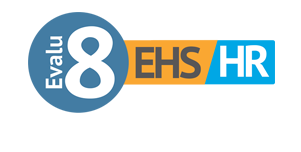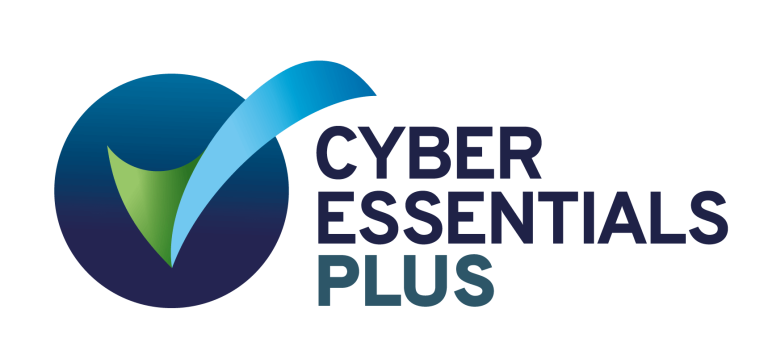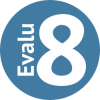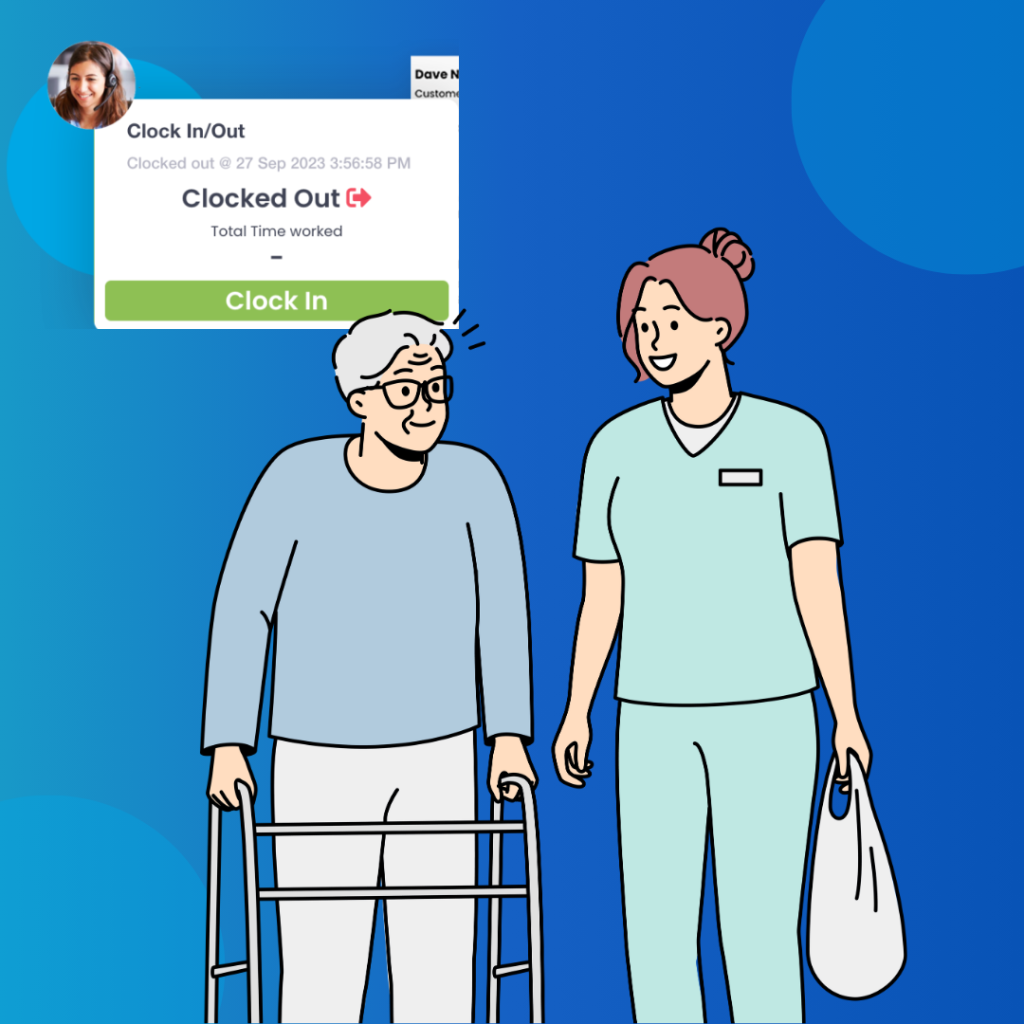
If your hospice struggles with clunky shift planning or constantly patching up volunteer schedules, you are not alone. Many care teams end up spending hours every week fixing rota errors rather than focusing on patient care. Typical ROTA platforms are built for one-size-fits-all scenarios and lack the nuance required for hospice realities. In this article, we examine why most ROTA systems fail hospices, how to spot the warning signs, and what features truly matter. We also highlight how Evalu-8 HR offers a hospice-ready solution that addresses the unique demands of mixed staff and volunteer workforces. Read on to learn how to ditch admin chaos and reclaim time for what matters most: compassionate care.
The Harsh Truth: Most ROTA Systems Aren’t Built for Hospices
Many generalist scheduling tools target standard care homes or hospitals with uniform shift patterns. Hospices, by contrast, juggle part-time nurses, overnight on-call duties, irregular volunteer visits, and fluctuating case loads. When a system assumes fixed shift lengths or rigid roles, mismatches arise quickly. Manual or semi-automated rotas lead to errors, last-minute patching, and increased admin overhead. Poor scheduling processes not only burn out coordinators but also risk understaffing critical shifts. Studies find that irregular scheduling can drive excessive paperwork and administrative costs, diverting attention from patient-focused activities. Without integration into HR, leave management, or time & attendance, these systems force manual reconciliation and duplicated work. Furthermore, lack of mobile-friendly interfaces hampers remote access for on-call staff and volunteers, causing late arrivals or missed shifts.
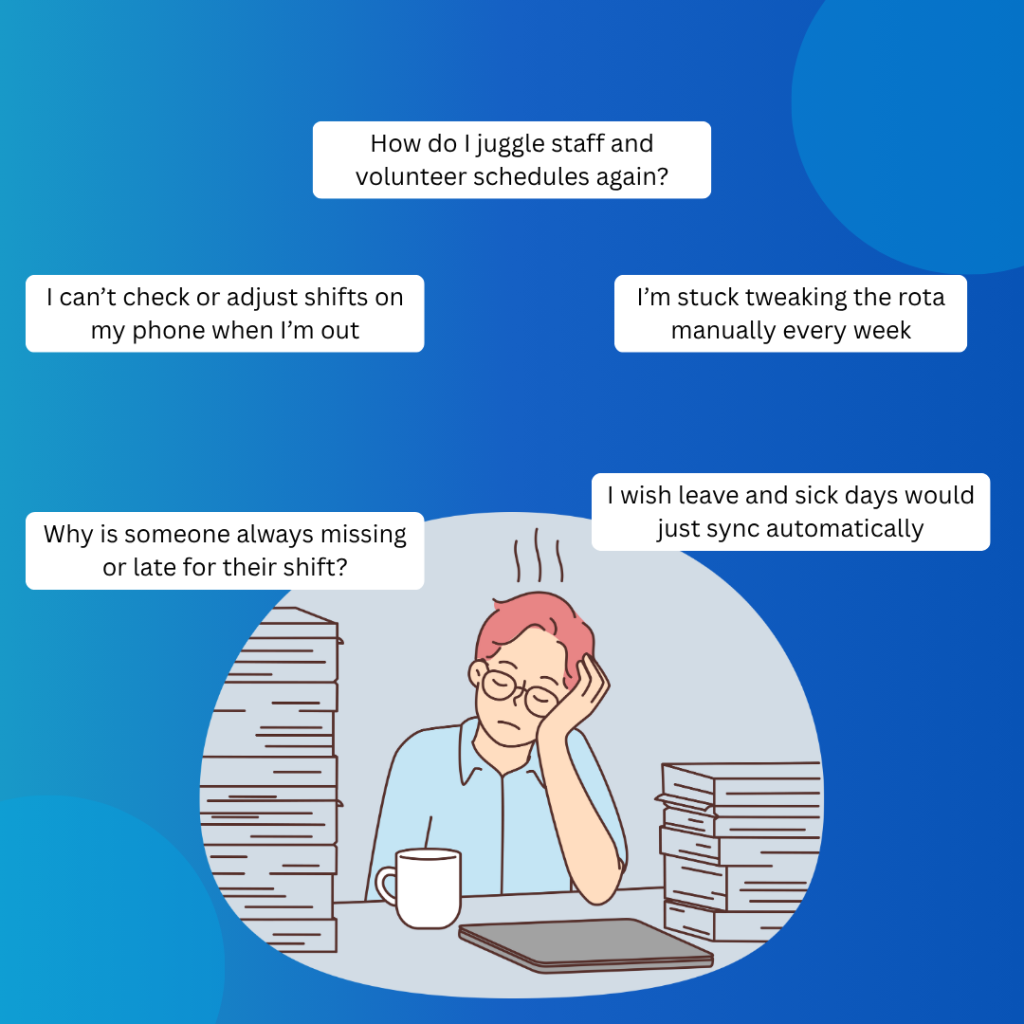
5 Signs Your Current ROTA System Is Letting You Down
Difficulty scheduling both staff and volunteers:
If your system handles paid staff rostering but treats volunteers as an afterthought, you end up juggling separate spreadsheets or platforms. This siloed approach creates confusion and double entries.Frequent missed or late shifts:
When staff or volunteers cannot view or adjust shifts easily, they may miss updates. Late arrivals or unfilled slots often stem from poor visibility or lack of real-time notifications.No integration with leave or sick reporting:
If leave requests, sickness absences, or ad hoc changes require manual intervention, the rota becomes outdated within hours. This increases reactive patching and undermines planning.Weekly manual rota adjustments:
Having to rebuild or significantly tweak the rota every week signals the tool cannot handle dynamic demands. Manual tweaks introduce human error and consume valuable coordinator time.No mobile access or poor UX for remote teams:
Hospice teams include on-call nurses, community carers, and volunteers often on the move. Without a mobile-friendly interface, they lack instant access to rota changes, leading to confusion and stress.
What Hospices Actually Need from a ROTA System
Flexibility for part-time, overnight, and volunteer shifts:
The system must support varying shift lengths, split shifts, on-call rotations, and volunteer time blocks without forcing workarounds.Role-based profiles (nurses vs. admin vs. volunteers):
Distinct access levels and scheduling rules per role ensure the right people see relevant information and permissions.Time & Attendance that syncs with rotas:
Automatic linking of scheduled shifts with clock-ins and outs reduces manual reconciliation and payroll errors.Integration with leave, HR records, and payroll prep:
Seamless data flow from leave approvals to staffing levels prevents gaps and ensures compliance with working-time regulations.Mobile access for remote staff:
An intuitive app or responsive web interface lets carers and volunteers check, swap, or confirm shifts on the go.Instant visibility into who’s in, off, late, or covering:
Dashboards and notifications keep coordinators and team members up to date, reducing last-minute scrambles.
Why Evalu-8 HR Stands Out for Hospices
Evalu-8 HR is designed to manage complex, mixed workforces typical in hospice settings. It combines rota management, time & attendance, and HR functions within a single platform tailored for not-for-profits.
Explore Evalu-8 ROTA
Key features include:
Comprehensive workforce coverage:
Manage paid staff, bank nurses, and volunteers in one place. No need for separate spreadsheets or tools.Built-in safeguards:
Max shift hours and fatigue alerts help protect staff wellbeing and ensure regulatory compliance.Volunteer recognition and reporting:
Track volunteer hours automatically, generate data for grant applications, and recognise contributions without extra admin. For instance, some hospices report saving over 1,200 admin hours annually after adopting volunteer management toolsGrant & funder-friendly audit reports:
Prebuilt reporting templates show rota coverage, volunteer engagement, and staffing metrics required by funders.Integration across HR modules:
Leave, sickness, payroll prep, and rota data flow seamlessly, cutting manual reconciliation.Mobile-first design:
Remote teams access shift details, request swaps, and receive alerts on their smartphones.Affordable pricing for not-for-profits:
Structured to fit hospice budgets, with UK-based support from people who understand sector-specific challenges.
FAQs
Yes. Evalu-8 HR supports integration with major UK payroll platforms, pulling time & attendance data directly to simplify payroll preparation.
The mobile interface and automated notifications ensure staff and volunteers are alerted instantly to cover gaps. Fatigue alerts also prevent over-scheduling in emergencies.
Yes. You can store volunteer profiles, training certifications, and track compliance deadlines within the system. Reporting features help prepare audit-ready documentation for regulators and funders.
Evalu-8 HR employs UK GDPR-compliant hosting, encrypted data storage, and role-based access controls to ensure confidential staff and patient-related information remains secure.
Implementation timelines vary by hospice size, but many organisations go live within weeks. A demo will outline the onboarding process, data migration, and training support to ensure a smooth transition.
